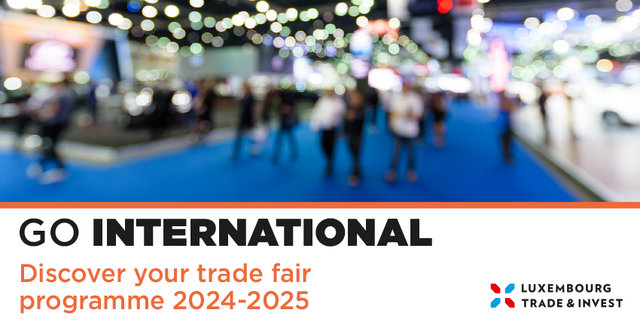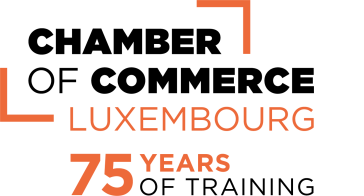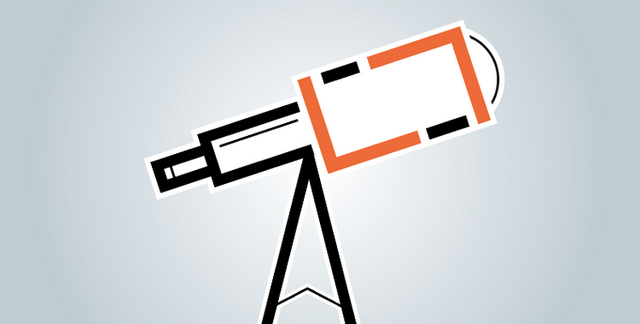
Internationalisation

Friday, 29 November, the Chamber of Commerce together with the Ministry of Finance and the Asian Development Bank (ADB) organised the seminar, Business Opportunities with Multilateral Banks. The event, which gathered 30 participants, gave an overview of four multilateral banks of which Luxembourg is a member: the Asian Development Bank (ADB), the European Bank for Reconstruction and Development (EBRD), the African Development Bank (AfDB), and the European Investment Bank (EIB). All attendees also had the possibility to meet with the specialists in one-to-one meetings after the presentations.
In a brief introduction, Violaine Mathurin, Advisor in International Affairs at the Luxembourg Chamber of Commerce, highlighted that one of the core missions of the Luxembourg Chamber of Commerce is the promotion of international business relations by supporting Luxembourg based companies in their projects to expand their markets within Europe but also beyond. In that context, the Ministry of Finance is a key partner that helped to establish the link with the Asian Development Bank, which was the first to launch the idea of organising this joint seminar, in the context of their annual roadshow through Europe.
Georges Heinen, Senior Government Advisor at the Ministry of Finance, then explained in his introduction that Luxembourg is a shareholder not only in the World Bank but also in various multilateral development banks. Roadshows to present the business opportunities with multilateral banks started already in the 1990s and the first visit of the President of the ADB happened in the early 2000s. The most recent membership is with the AfDB as it is only in 2014 that Luxembourg became a member. Mr Heinen is acting as the Alternate Governor for Luxembourg in the AfDB.
The first multilateral development bank to be presented was the Asian Development Bank. Ashraf Mohammed, Deputy Director General of the Procurement, Portfolio and Financial Management Department (PPFD) at the bank, first gave an overview of the institution and its procurement system. Established in 1966, with headquarters in Manila, the ADB aims to achieve a prosperous, inclusive, resilient, and sustainable Asia and Pacific, while sustaining efforts to eradicate extreme poverty. Out of the 68 member countries, 49 are located in Asia, while 19 are located outside of Asia. Among them, 38 developing countries receive financial support. Out of ADB operations, almost 75% are public sector (sovereign) projects while 25% are private sector commitments. The two main sectors that receive support from ADB are Transport (36% of the operations) and Energy (25%) although the ADB also works on water and other infrastructure and services (13%), agriculture, natural resources and rural development (11%), education (7%), finance (3%), public sector management (2%), health (2%), ICT (1%), and industry and trade (1%) as well. China remains one of the top five lenders of the ADB with India, the Philippines, and Bangladesh.
Since 2017, a new procurement framework has been introduced that modernises the processes of project procurement through a principles-based approach. There are mainly five types of business opportunities with the ADB: 1. Supply of goods; 2. Civil works; 3. Turnkey contracts; 4. Consulting services, and 5. Non-consulting services.
During his overview, Mr Mohammed also underlined that in order to identify opportunities, interested companies should have a look at the country partnership strategies as well as country operations business plans, that are detailed on the website of the ADB.
Frédéric Asseline, Principal Climate Change Specialist in the Sustainable Development and Climate Change Department (SDCC) at the ADB then presented more details on the Climate Change and Disaster Risk Management (DRM) programme of the ADB. He highlighted that in 2017, 43% of the CO2 world emissions were emitted in Asia, and by 2030 it is expected that electricity demand in Asia will grow to 43% of the world share. He also specified that climate change and DRM challenges are real issues and radical changes are needed. That is why the ADB has made climate change and DRM one of its seven main operational priorities. He also mentioned that the ADB and other MDBs have a joint methodology to tackle climate finance based on six building blocks as core areas for aligning with the Paris Agreement. He also recalled that in 2010, the Green Climate Fund (GCF) was established to channel climate finance with pledges of USD 10.3 billion from 43 state governments. So far, the GCF has committed USD 5.6 billion to 124 projects globally.
Following the ADB presentations, Christian Hartung, Manager of Business Development at the EBRD, gave a presentation on how companies can work with the EBRD and what the bank can do for them in their countries of operations. Owned by 69 countries from five continents, the EBRD was established in 1991 in London, at the collapse of the Soviet Union. Originally created to foster economic development in the former Soviet Union region, it now also has operations in some African and Asian countries. Since its creation, the EBRD has invested over EUR 139 billion in around 5,536 projects from all key business sectors: transport, infrastructure, tourism, financial institutions, natural resources, ICT, manufacturing and services, power and energy, industry, commerce, and agribusiness. Green finance is also a concern for the EBRD which has financed more than 1,670 green projects and allocated more than EUR 30 billion to green finance. Mr Hartung also presented some tips on what type of projects the EBRD finances, and what not, and explained the approval process when a project is submitted. With the help of business cases, he presented some projects that were approved by the bank.
After that, Ashraf Hussein Ayad, Lead Procurement Policy Officer at the AfDB, presented the African Development Bank Group. Divided into three institutions: the AfDB, the African Development Fund and the Nigeria Trust Fund, the AfDB group was founded in 1964 and today counts 54 regional member countries and 27 non-regional member countries. Clients of the AfDB are middle-income countries, low-income countries, and countries post-conflict and in fragile situations. Originally created with a capital of USD 95 billion, the bank has recently benefited of a capital increase and now has a budget of USD 200 billion . Between 1967 and 2017, the AfDB has approved projects for a total amount of USD 102 billion in various sectors: infrastructure (45%), finance (13%), agriculture (12%), social (10%), industry and mining (4%), and the rest for multisector projects (16%). Mr Ayad also explained in more detail the new procurement framework of the AfDB that was recently launched. This new framework is based on risk assessment and follows a ‘fit for purpose’ approach. Each proposal submitted is assessed on three levels: according to the country, the sector, and the project itself. Finally, he underlined that in order to enter the African markets, participation in AfDB approved projects is a good entry point.
The final presentation was given by Andreja Neral Lamza, Senior Procurement Specialist at the EIB, who gave an overview of the EIB and its procurement policy. The EIB, created in 1958 and headquartered in Luxembourg, is the largest multilateral lender and borrower in the world, lending 90% (EUR 56.1 bn) within the EU and 10% (EUR 8.1 bn) outside the EU. Its shareholders are the 28 member states. The EIB typically finances up to 50% of project costs in four areas of priority: SMEs (EUR 23.3 bn); climate and environment (EUR 15.2 bn); innovation and skills (EUR 13.5 bn), and infrastructure (EUR 12.3 bn). So far, the EIB has reached 370,000 SMEs with its funds since its creation. All the projects that the EIB finances must be bankable and also comply with highly technical, environmental, and social standards. The EIB distinguishes itself from other MDBs in the fact that it has a dual approach regarding its procurement model. Indeed, inside the EU, the EIB has no standard template or tender documents, like other MDBs, since the EIB expects that European countries have implemented EU directives in their national laws. Outside the EU, the procurement model is based on Treaty principles (equal treatment, non-discrimination, mutual recognition, proportionality, and transparency).
After the presentations, all the attendees had the possibility to meet with the specialists in one-to-one meetings.
In her conclusion remarks, Violaine Mathurin said that trying to be involved in projects that are supported by MDBs is a good option to access difficult or new markets but that companies still need to carefully think of their strategy when they want to go international. The International Affairs team at the Chamber of Commerce is there to support them in their endeavours.
The next important event related to ASEAN countries will be the ‘Asean Day’ that will take place at the Luxembourg Chamber of Commerce on 3 March 2020.
For further information about the Luxembourg Chamber of Commerce’s activities related to Asia, please feel free to contact asia@cc.lu (contact persons: Sabrina Aksil, Na Shi – T: +352 42 39 39-374/363).


